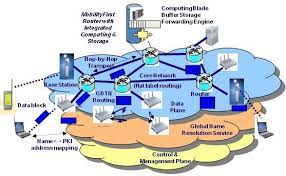Internet Architecture and Protocol-MSCIT613

- Module Team: UMUHOZA Bonheur
- Module Team: Dr. HAKIZIMANA Leopord
- Module Team: UMUHOZA Bonheur
- Module Team: Dr. Luc Ngend Einstein
- Module Team: UMUHOZA Bonheur
- Module Team: Dr. Luc Ngend Einstein
This module introduces IT project management and control concepts and exposes the student to modern tools and methodologies such as information systems pathology, risk analysis and control using generic risk management criteria, feasibility determination, and identification of opportunities.
Aims:
Course objectives of this course include:
(i)Determination of project key success factors
(ii)Project evaluation techniques such as post-implementation reviews, risk checklists.
(iii)Risk identification and analysis techniques. Such as RAMESES, SEI-SRE, and Riskit).
(iv)Creative problem solving approaches (e.g. Theory of Inventive Problem Solving, TRIZ), and techniques such as the 9 boxes tool the contradiction matrix.
(v)Evaluation of relationship between risks and opportunities
Learning Outcomes:
At the end of this course the student will be able to:
(i)Determine the feasibility of competing IT project implementations
(ii)Measure IT project risk and design mitigation strategies, and
(iii)Measure project performance and perform project reviews
Teaching and learning pattern: Lectures, tutorials and group assignment
Course Contents
(i)Understanding of the PMI framework and it’s set of project management best practices.
(ii)Fluency in IT project management terminology
(iii)Introduction to and analysis of IT Project Life Cycles and SDLC models
(iv)Identification and analysis of why IT projects fail and what skills are required to implement
(v)Practice with the identification of project deliverables, requirements, and objectives.
(vi)Identification and analysis of project stakeholders and project communications.
(vii)Understand and apply Project feasibility measurement techniques
(viii)Understand and apply risk analysis techniques
(ix)Comprehensive understanding of IT project complexity metrics, and
(x)In depth understanding of general systems quality theory and application
(f)Assessment:
(i)Tests and assignments (60%)
(ii)Final written exam (40%)
Reference Books:
(i)Project Management: A systems approach to planning, scheduling and controlling, Harold Kerzner, John Wiley & Sons, 1997 ISBN 0471288357
(ii)Software Engineering Project Management , Richard H. Thayer (Editor), Winston W. Royce, Edward Yourdon, IEEE Computer Society, 1997 ISBN 0818680008
(iii)Project Risk Management: Processes, Techniques and Insights, Chris Chapman and Stephen Ward, 1996 ISBN-10: 0471958042

- Module Team: UMUHOZA Bonheur
- Module Team: Dr. HAKIZIMANA Leopord
Introduction part

- Module Team: Wellington MUHIRE
- Module Team: Emmanuel NIYONSENGA
- Module Team: Therese Nyampinga
- Module Team: FILIPO RUGIRA
- Module Team: Makuza Rutishereka
General Introduction to the Course
This course underpins topics such as multimedia capturing, authoring, production, and compression techniques. Characteristics of various multimedia applications are also discussed. Deployment of media contents within Web applications is also discussed. Example of emerging technologies is also given.
Aims: This course aims to make students familiar with basic multimedia concepts that include capturing, authoring, production, compression and enhancing web accessibility using multimedia.
Learning Outcomes: At the end of this course unit this course students will be able to: Understand various multimedia technologies related concepts: multimedia capturing, authoring, production and compression, deploying multimedia contents within Web applications, and enhancing Web accessibility through multimedia
Teaching and learning pattern: Lectures, tutorials and group assignments
Content: Multimedia related terms and basic concepts. Techniques of multimedia capturing, authoring, production, compression and compression tools and techniques. Visual media formats: graphics, audio, video and their characteristics including interoperability. Using media contents. Enhancing Web accessibility using multimedia contents. Multimodal user interface and web accessibility. Appreciating the concept of virtual reality as an example of an emerging technology
Assessment method:
(i) Coursework: 60%
(ii) Final examination: 40%
Reference Books:
(i) Chapman, N., Chapman, J. (2000). Digital Multimedia. John Wiley & Sons Ltd. ISBN 0-471- 98386
(ii) Lee, W.W., Owens, D.L. (2000) Multimedia-Based Instructional Design. Jossey-Bass/ Pfeiffer. ISBN 0-7879-5159-5
(iii) Li, Z.-N., Drew, M.S. (2004). Fundamentals of Multimedia, Pearson Higher Education
Course Instructor:
Dr Hakizimana Leopord
Email: lhakizimana@uok.ac.rw
Tel:0783781289

- Module Team: Dr. HAKIZIMANA Leopord
